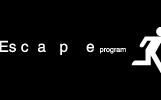 |







|
 |
Valeriy
Ayzenberg. Curator B.
Mamonov. "New York reflects in Hudson". ESCAPE
gallery, Moscow, 2003.
 An
exhibition of Valeriy Ayzenberg "New York reflects in Hudson"
is a kind of a farewell to nonspectacular art - a style of art that
emerged on Moscow art scene, and for the last two years has been
much spoken about. An
exhibition of Valeriy Ayzenberg "New York reflects in Hudson"
is a kind of a farewell to nonspectacular art - a style of art that
emerged on Moscow art scene, and for the last two years has been
much spoken about.
Mr. Ayzenberg is known to be a creator and the leader of the ESCAPE
program, and his personal creative work is deeply interwined with
the strategy of the group. One shouldn't forget it was the ESCAPE's
project "Liza and the Dead" that became the first nonspectacular
work in Moscow.
 But
unlike the adept of this school Anatoly Osmolovsky, the program
didn't set a task of ideologizing their movement. A feature of the
ESCAPE, which is in many ways inherent to its creator - Mr. Ayzenberg
- is to distance themselves from the cultural practices, including
the ones of their own. But
unlike the adept of this school Anatoly Osmolovsky, the program
didn't set a task of ideologizing their movement. A feature of the
ESCAPE, which is in many ways inherent to its creator - Mr. Ayzenberg
- is to distance themselves from the cultural practices, including
the ones of their own.
Not surprisingly that Sergey Epikhin, a critic, saw a parody for
nonspectacularity in the work of the group "Peace is but a
dream" showed at the last Art-Moscow festival.
Anyway, a new project of Mr. Ayzenberg is quite in the tideway of
the general line of the "Escapists".
Ayzenberg makes a refined gesture in the manner of the popular discourse
at the same time thematazing his autobiography configurations.
A famous painter of the "Russian boom" age, who has exhibited
his paintings in Russia and Europe and is living now in Moscow,
now in New York, Ayzenberg got involved into the movement, that
didn't seem organic to him. And here an important thing for him
is not a formalistic gesture, that is so characteristic of the "sound"
nonspectaculators, but some story that is hidden below the language
of the day. In the invitation tickets the artist advertised that
it would be a pictorial art exhibition, another actual brand, that
opposes nonspectacular art.
 However
visitors coming to the exhibition see nothing but bare walls at
first. However
visitors coming to the exhibition see nothing but bare walls at
first.
What is it? Is it a comeback to conceptualism? A one more practical
joke? But art is indeed in the limelight. The success of the exhibition
is in the fact that the object of contemplation is in the foreground.
And yet the viewer has to play cold/hot game with himself. Right
at the hall entrance V. Ayzenberg placed an ordinary bookcase, and
the top of it was stuffed with paintings. The bookcase was covered
with a light-blue cloth, and the paintings cast curious shadows
on it. Indeed, the shadows resembled the reflections of skyscrapers
in the water. The paintings remain invisible, but their shadows
- "the shadows of art" - are available for contemplation.
And here comes out a required suggestiveness that is inherent to
the best works of nonspectacular art.
 It
is characteristic, that Ayzenberg uses paintings, traditionally
the most representative object, to create an "invisible"
art. It
is characteristic, that Ayzenberg uses paintings, traditionally
the most representative object, to create an "invisible"
art.
Using simple means Mr. Ayzenberg manages to tell the viewer the
whole story, that goes back not only to the antecedents of the artist,
but also of his nation.
The inconsistency of the Jewish culture, its drama is undoubtedly
related to the taboo of an image. He who isn't a master of an image
can't count on being heard.
The advent of Messiah is inevitable, and a man must not just hear,
he wants to see, to feel, "to put his finger in the wound".
A man needs pictorial art.
Ayzenberg devoted all of his life to a picture to understand at
last that it is as well powerless. It turns out, that it is not
the image itself that is important, but its inaccessibility, and
only then it becomes sacral.
A picture, exhibiting itself as an object, at the same time hides
its own contents - the painting. The viewer has nothing to see but
the shadow of a picture, but not the shadow of painting.
There are two opposing schools on the Moscow art scene today - the
nonspectacular art and new painting. Mr. Ayzenberg, being skeptical,
challenges both.
Perhaps such behavior is quite natural for him, because among Moscow's
artists he is the only witness of the fall of the Twin Towers, that
is by itself the most sharp criticism of the image that can be imagined.
Once it was popular to make jokes about the virtuality of America
itself, which, as the then wisecrackers used to say, was merely
a Soviet propaganda dodge, showed on television.
Valeriy Ayzenberg, who is a regular visitor in New York, seems to
be in doubt about the tangibility of this place, the same as about
the tangibility of art.
"Moscow Art Magazine" #50, 2003.
|
 |
|

